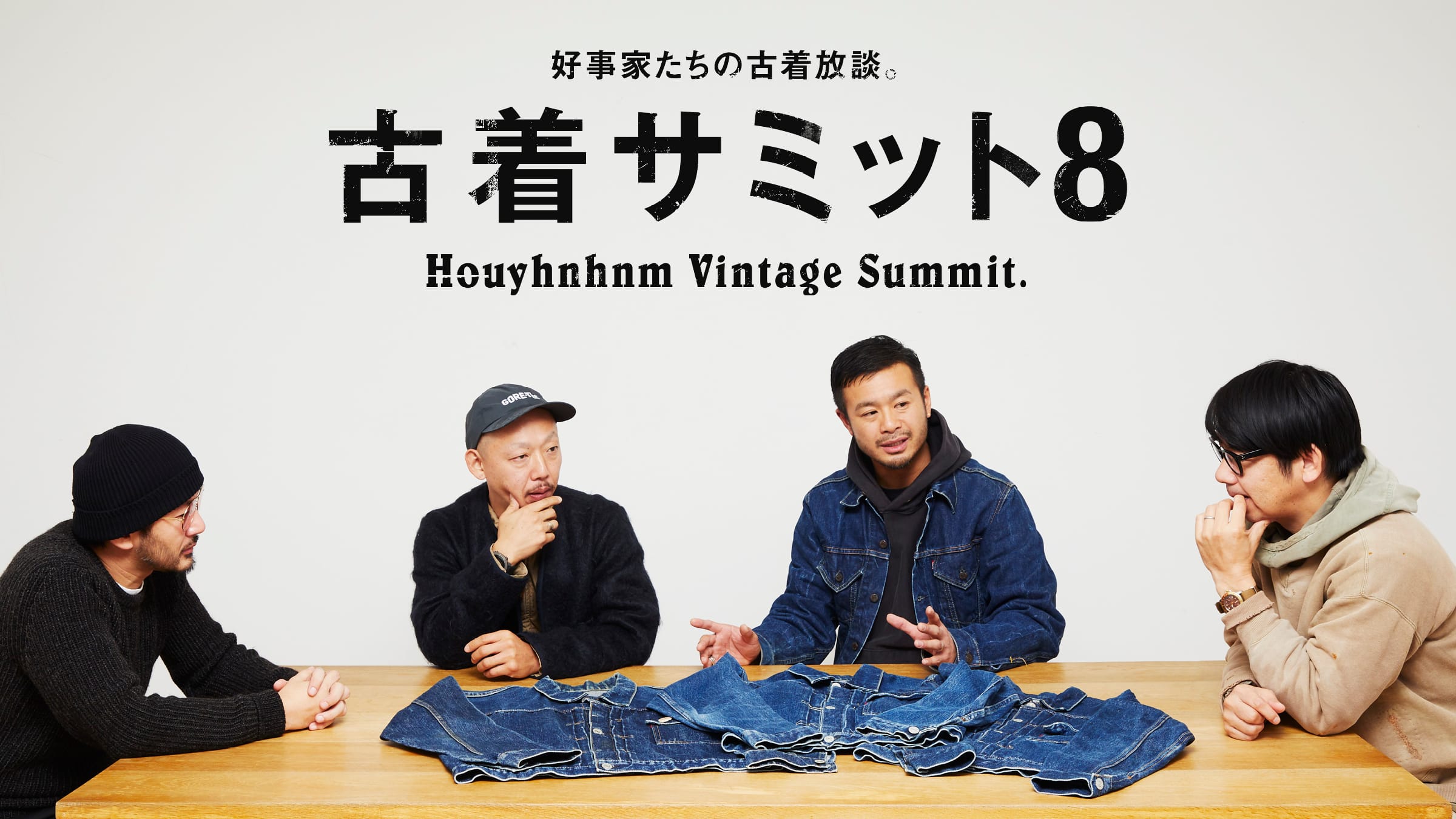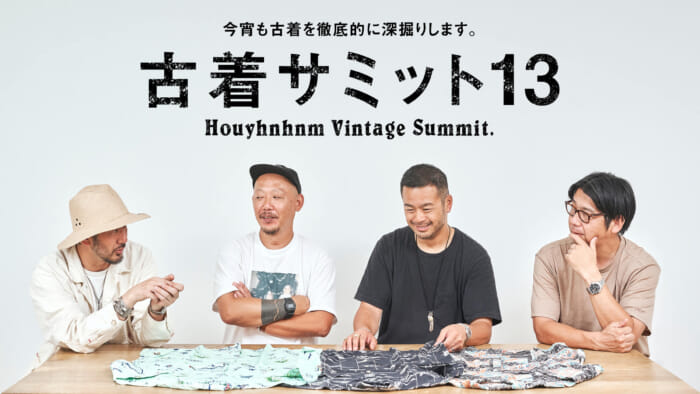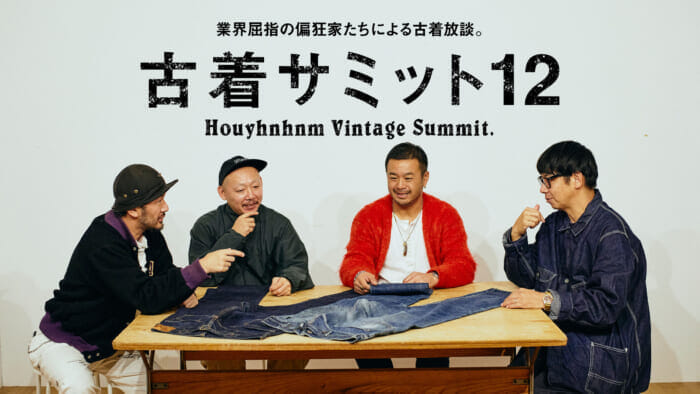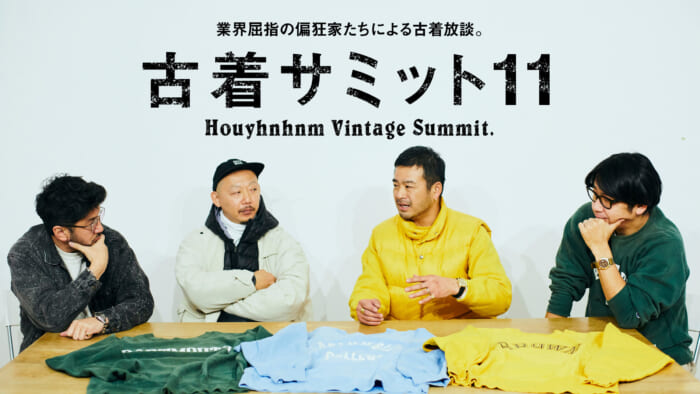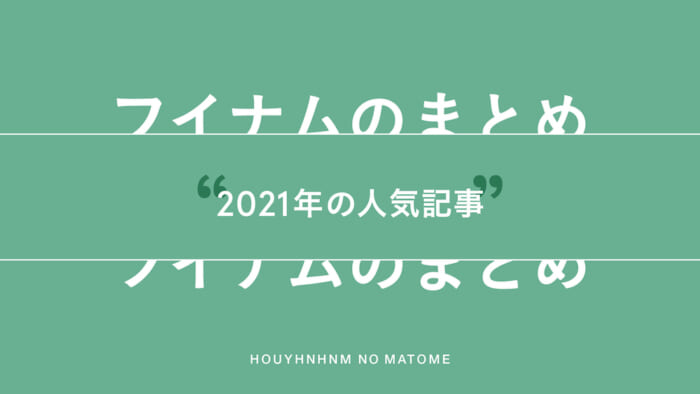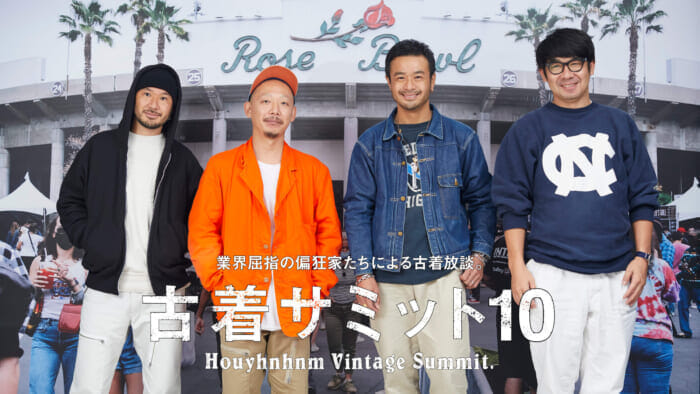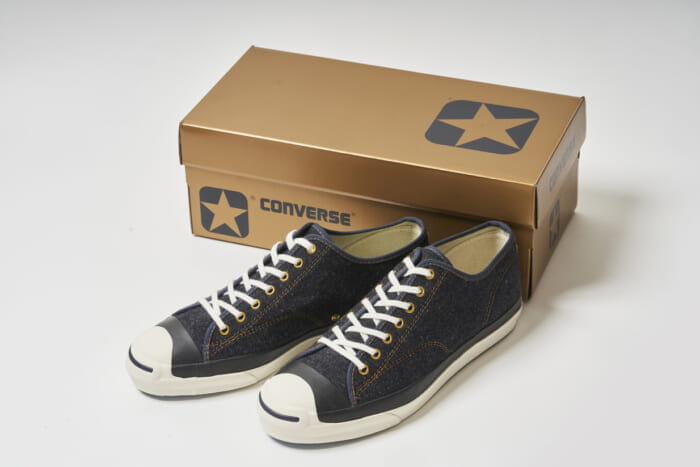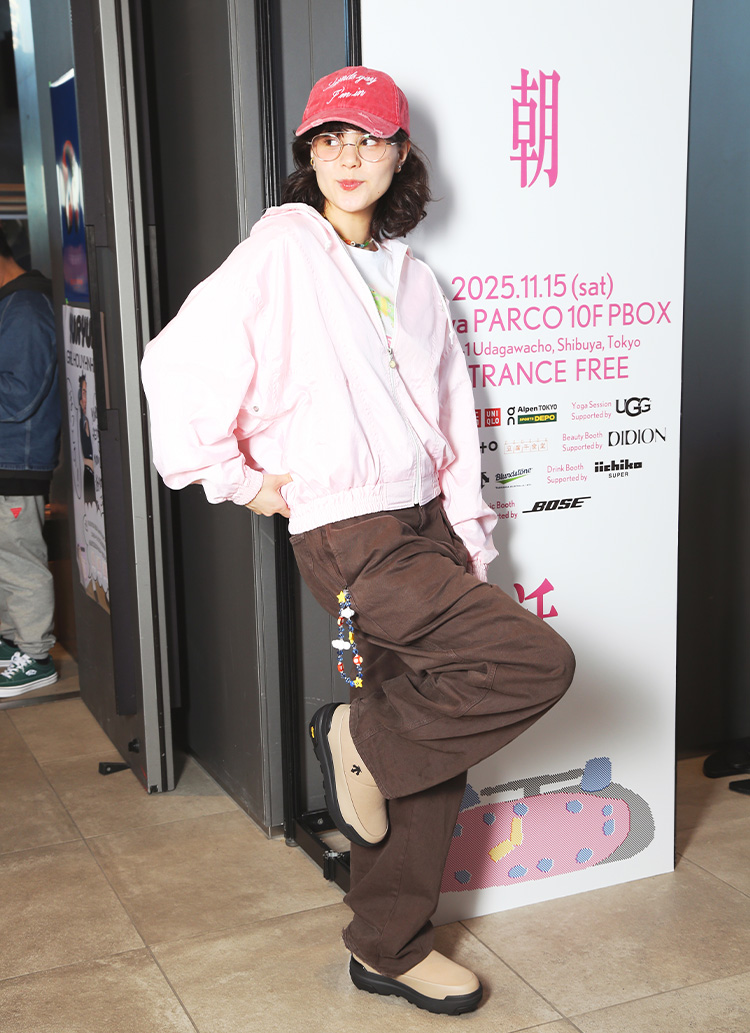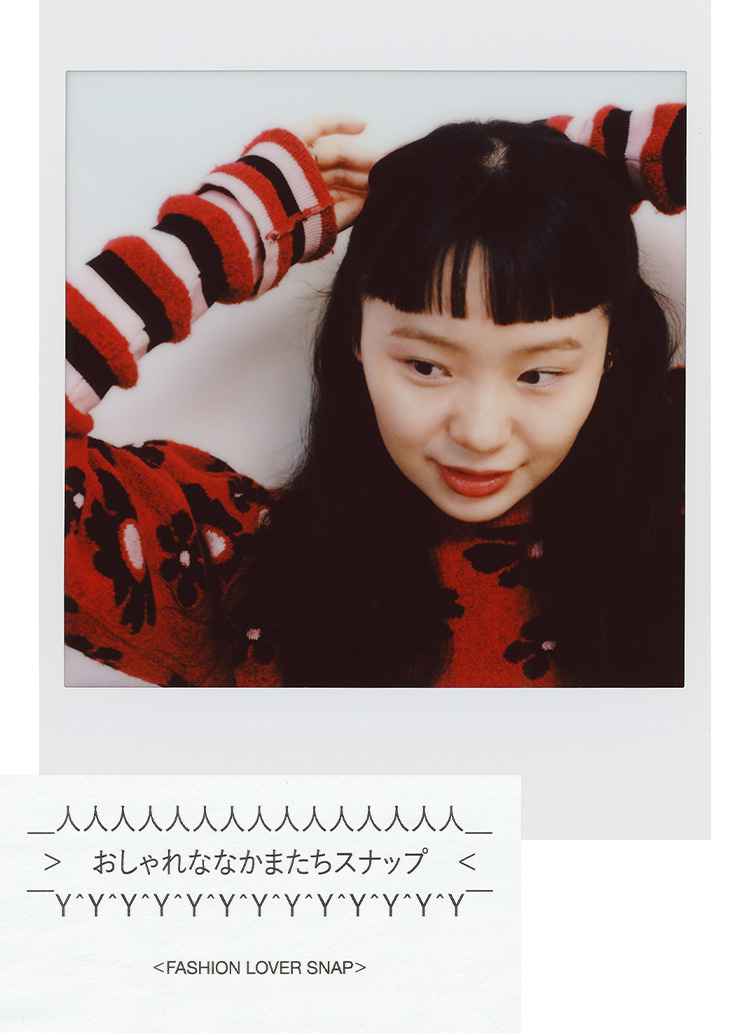Fourth lecture Takashi Abe
. a beige-bodied, yellow-lined Brooks range that I had never seen before."

THE NORTH FACE BROOKS RANGE
Abe:My first one is a rare color of the "Brooks Range" down parka, which was introduced by The North Face in 1977 and continued to be sold until the 1990s. Generally, the down parka is usually navy or blue with yellow lining, or yellow alone, and I have a navy and yellow one myself, but this beige body with yellow lining is the first one I've seen.
Konno:You have a color scheme like this? Where did you get it?
Abe:eBay. And it's not as expensive as it sounds.


Kurihara:The model names are different depending on the material used, I believe .
Abe:. yes, that's right. Looks like the ripstop nylon version is the "North Face Parka" and the 65/35 cloth version is the "Brooks Range". And the former has a separate hood, while the latter has a hood by default. . So I see a lot of the ripstop type without hoods.
Kurihara:Also, I heard that there are round and square velcro shapes to hold the specific wings, and that there has been some kind of transition there as well.

Abe:I believe the later model was square and the earlier model was round. Is this the first time you've seen this color scheme, even for Kuri and Yutaka?
Fujiwara:No , it's the first time.
Kurihara:Same here. But, beige body is common in other models of "The North Face", isn't it? So why is it that the "Brooks Range" is so rare?
Konno:It doesn't look like a sample from what I can see of the tags and such.
Abe:Someone asked me before that, at that time, colors that were not listed in the catalog were sold only in stores, and some of them were made to expedition specifications or originally created by employees.
Konno:Heh . I see.

Abe:Of course, down itself is my favorite category, but maybe "Brooks Range" is the only one I keep looking for. I had a Karakoram by Eddie Bauer (a down parka developed for the mountaineering team that attempted the K2 summit of the Karakoram Mountains in 1953), but I ended up giving it away.
Fujiwara:That's right. I also have the impression that "Brooks Range" = Mr. Abe.
. color schemes and specifications not found in the official product .
I thought the City Raincoat samples were rare."

'94y patagonia CITY RAIN COAT SAMPLE
Abe:The second is Patagonia's "City Raincoat" ("City Raincoat").Vintage Summit 2.) I've loved this model for many years and continue to use it, but this was the first time I saw this color scheme. . It looks like a sample to me.
Fujiwara:Yes (laughs). Mr. Abe saw our blog and called me immediately.
Abe:Thank you very much! The color scheme is not the same as the regular one, and the lining is mesh, and the specifications are slightly different.


Kurihara:. The outer fabric is also different to begin with, isn't it? Besides, the tag says "F94, 95," so it was supposed to be released in the fall/winter of '94, but "city raincoats" were no longer being made at that time, right? I think it was until the early '90s or so.
Abe:. yes, I think it is. This sample was probably dropped in the middle of development as its successor. . . But I like the fact that it is clearly labeled "City Rain Coat" on the tag.

Kurihara:. since it mentions "Fabric Wear Test," it is possible that they were testing the utility of the fabric itself, regardless of the model.
Konno:. even though it is a sample, it doesn't seem to be dead stock, does it?
Abe:. There are signs of having been worn. To be honest, it's quite large for everyday wear, but I thought such an unusual and beautiful color scheme would be hard to find.
Kurihara:Indeed . It's a purple like the "Baby Retro Cardigan" (a zip-up pile jacket released in the early '90s), which is typical of "Patagonia.

Fujiwara:Yes, that's right. Among Patagonia's many color schemes, including the "Das Parka," purple is exceptional.
Kurihara:Is the pattern the same as the regular one?
Abe:I think we're probably together.
'Hooded, with a blanket liner , and an extra heart tag.
Carhartt coveralls."

'50s Carhartt COVERALL WITH HOOD
Abe:The third is a hooded coverall from " Carhartt. I bought it at Santa Monica Omotesando, and the deciding factor was, above all, that the hood was still there. It has a four-button front opening and was made in the '40s or '50s, right?
Fujiwara:If it's the big buttons, it's definitely '40s , but this is probably '50s. . because the blanket lining inside is the exact same pattern as the "Storm Rider" (Lee's continuing denim jacket with cord collar lining) from that era, and the size notation on the brand tag is basically the same as it was in the '50s.


Konno:Was the hood a separate option?
Kurihara:I wonder . Some of the current items are sold separately, and I wouldn't rule out that possibility. However, since the tag on the hood side of Mr. Abe's is from the same heart mark era and the colors match, it must have been worn by the original owner at the same time, regardless of whether it was sold separately.

Fujiwara:We only have two hoods from this era in our inventory, and I've always wanted to use them when the bodies come out, but no matter how many years go by, they never come out.
Kurihara:I also brought a '60s of almost the same model as a candidate for today's topic, but I was really glad that I didn't bring it out if I was offered something like this. Of course, there is no hood left (laughs).
All:(Laughter)
Fujiwara:Also, I think it would be more difficult to get the hood out, since the only model that comes with a hood is the one with the blanket lining.
Abe:I see.

Kurihara:Compared to the '60s version I brought with me, the color of the brown duck is much darker in this vintage.
Abe:Yes, it is. It looks more like chocolate brown.
My favorite marine motifs are,
Even if I dabble, I try to buy it anyway."

'50s-'60s HANDKERCHIEF MARINE MOTIF
Abe:The last one is a bandana as a good example, or perhaps a handkerchief this time. Even though there are no tags or flashers, I have chosen one that is probably from the '50s or '60s based on the pattern and specifications, plus the marine motif.
Fujiwara:What is the major difference between a handkerchief and a bandana?
Abe:I guess it's the fabric and the size.

Konno:Every time I wonder, where do you find these rare items?
Abe:. variously, but as far as this marine motif is concerned, I guess I tend to go to online auctions. I collect them with care because they use many of my favorite motifs: stars, anchors, sailboats .
Kurihara:This faded one looks older than the '50s and '60s, though.
Abe:Yes, I know. This may be old.
Kurihara:. and the fabric doesn't seem to be 100% cotton, so it's possible that it was sold as a scarf.


Abe:Yup . And most of them are multi-colored, white, red, and navy. . I try to buy them when they come out, even if they are dubbed.
Fujiwara:Is there a specific brand or something?
Abe:I don't know because there are no bags, tags, or flashers, but there are also different colors of the same pattern, so I may be able to identify them eventually if I do further research. Even though I don't use them everyday, as Yutaka said earlier, I collect them as if they were pieces of art.

Fujiwara:How much does it cost?
Abe:. it's not that expensive. But my wife might read this one, so we'll get to it later, privately (laughs).
All:(Laughter)


